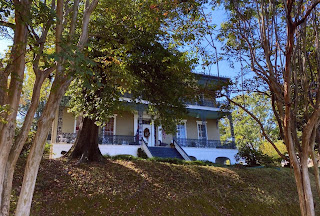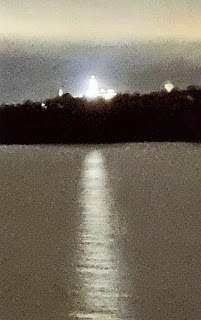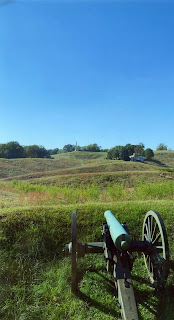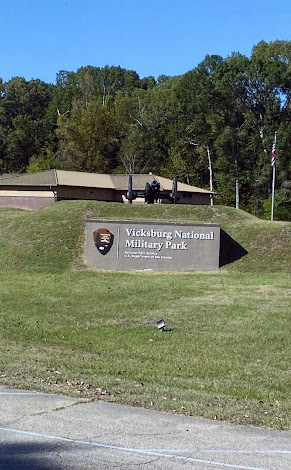Duff Green & His Mansion

Duff Green, 1791-1875, was an American teacher, military leader, Democratic party politician, journalist, author, diplomat and industrialist........ and he lived in Vicksburg. He made a good part of his fortune as a cotton broker. He was sympathetic to the Confederate cause but was a realist............ I quite love to learn the story-behind-the-story, especially in American history, and the story of Duff Green's mansion is one such story. The above photos show it as it is today and was during the Civil War. Duff Green built his mansion in 1856 high on a bluff using skilled enslaved labor and bricks that were fired onsite. The grand home survived the Siege of Vicksburg because Green designated it a "hospital" where both Confederate and Union soldiers were treated. Our tour guide in this mansion was the current owner and her love of this old house was evident. This red-walled photo was of the dining room where dinner was a 6-13 course affair with "libation






